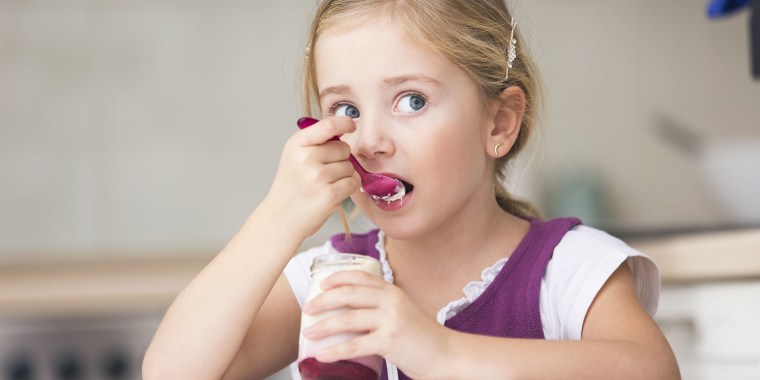Getting kids to make healthy food choices can be a challenge, and some of the foods marketed to kids and parents as “healthy” actually aren’t. We asked American Heart Association Spokeswoman Dr. Rachel Johnson to help us tell the good from the bad. Here are seven examples of supposedly healthy foods to pay attention to before serving to your child.
Yogurt
Yogurt is a great source of calcium, protein, and potassium and is often fortified with vitamin D. But kids’ yogurts are often flavored, full of added sugars, and high in fat. Some kids’ yogurt even comes with cookie or candy toppings. These are not healthy choices. Instead, try low or nonfat plain yogurt that you can sweeten yourself at home with cut-up fruit or a small amount of honey. If your child is picky, try mixing nonfat plain yogurt with the flavored yogurt she’s used to.
Granola
Granola often sounds like a healthy choice, but it can be high in fat, sugar, and calories. Granola that is marketed as lower fat often has additional sugar to make it taste better. Look closely at the labels and particularly at serving sizes. Many granolas offer only ¼ cup per serving, which is often less than we might serve. Instead, think of granola as a topping for yogurt or fruit, and don’t rely on it as a cereal.
Energy bars
Energy bars can be really high in calories and sugar. These bars, high in protein and fiber, are intended as a substitute for meals, rather than a snack. Dr. Johnson says if your child is eating them as a snack, they might as well eat a candy bar.
Smoothies
Smoothies are another tricky item. When made at home, where you can control the portion size and ingredients, they can be a good option for a quick breakfast. But pre-packaged or restaurant smoothies can have a lot of added sugars and extra calories. Some smoothies can have as many calories as a milkshake. When ordering a smoothie, make sure it is made with nonfat yogurt, no added sugars, and whole fruits rather than juice.
Salad bars
Salad bars are popular at restaurants and in some school cafeterias, but it’s important for your child to choose healthy options from the assortment of ingredients. If your child’s salad has a lot of cheese, croutons and bacon bits, and is topped with a full-fat ranch dressing, that’s not a very healthy option. Instead, focus on incorporating more vegetables, like shredded carrots, beans, and tomatoes and using a low-fat dressing.
100% fruit gummies
While 100% fruit gummies may seem like a fun way for your child to eat fruit, most gummies are made from concentrated fruit juice. Which is basically the same as cane sugar. Gummies offer no nutritional value like phytonutrients or fiber, both of which are found in whole fruits. Instead, offer your child whole fruits.
Multigrain crackers
Just because a product says “multigrain” does not mean it is healthy. Multigrain only means there is more than one grain in the product. Try to focus more on whole grains, and make sure to check the labels. A whole-grain cracker is a better choice than a multigrain cracker made with no whole grains.
